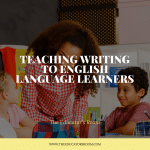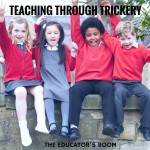 The Common Core State Standards have demanded that we change the way we teach. With new standards and a new emphasis on college and career readiness that must be able to reach all students, as teachers we need to adapt. With so much to cover in one short (though it may not always feel like it) school year, one way to ensure students are well rounded and still working within the CCSS is through an interdisciplinary approach. There may be some misconceptions about what an interdisciplinary approach to teaching is and what it can be. This does not mean using a reading passage with a science or social studies topic and calling it interdisciplinary. An interdisciplinary approach is much more project based than you may think. Project based learning is very much an emphasis within the CCSS and something to keep in mind when designing new curriculum at your school.
The Common Core State Standards have demanded that we change the way we teach. With new standards and a new emphasis on college and career readiness that must be able to reach all students, as teachers we need to adapt. With so much to cover in one short (though it may not always feel like it) school year, one way to ensure students are well rounded and still working within the CCSS is through an interdisciplinary approach. There may be some misconceptions about what an interdisciplinary approach to teaching is and what it can be. This does not mean using a reading passage with a science or social studies topic and calling it interdisciplinary. An interdisciplinary approach is much more project based than you may think. Project based learning is very much an emphasis within the CCSS and something to keep in mind when designing new curriculum at your school.
An interdisciplinary approach may not work for every topic you do, but when it is usable and beneficial for the students you will be thrilled with the work the students do. One example of an interdisciplinary approach I was given at a conference over the summer was students making instruments. They had to research instruments from around the world (social studies) and learn the physics behind sound. They had to understand sound waves and why different instruments made different tones. This was an incredibly in depth project with great results. The students all finished the project with their own original instrument and were able to explain how and why the sounds that came from the instrument was made. They were also able to explain the cultural inspiration behind their instrument. As with any interdisciplinary project, the students became excited and fascinated with various topics centered around one theme: instruments. A project such as this would be incredible beneficial to English Language Learners.
ELLs have a great depth of knowledge, however that knowledge may be different than from what we know and understand and it is in a language we may or may not speak. One way to engage ELLs is to use a project based approach. This allows the student to participate in many ways. It also makes differentiation easy. You could turn the project into a group project and assign various roles based on English language level and/or their home language. Providing bilingual materials with which to research would also allow more students to participate in the most active way possible.
When working with ELLs, as teachers we must keep in mind how to keep them as engaged as we possibly can in every classroom activity. Project based learning with an interdisciplinary approach is a wonderful way to do that. When teaching in an international classroom, which can be very common in today’s society, students come to the class with various levels of background knowledge. Some students from certain countries may be better at math, but may not be strong readers in their home language. And then when you include students that use different types of alphabets in their home language, at first the absolute only subject they feel comfortable participating in is math. Numbers are the same everywhere. And then you may even have students that have never been to school before in their life, but may have a great knowledge of farming and animals. As a teacher of all students we must include students in any way possible. By using an interdisciplinary project based approach, all students can participate in their own way.
The hardest part when it comes to this approach is assessment. Rubrics are a must have. The teacher must keep in mind that each student needs to come away with sufficient knowledge of all subjects involved in the project. There can be different rubrics for different language levels and how they present their knowledge to you. How you assess must be up to you, but do realize that one rubric may not “fit all” in a situation where there are different levels of English knowledge in your classroom.
I realize that what I am proposing may sound like a lot of work. The only reassurance I can offer is that by using interdisciplinary projects your students will be engaged and will be knowledgable in various subject areas instead of only the testing areas of ELA and math. You will be handsomely rewarded when you see the amount and depth of work your English language learners can accomplish when you play to their strengths and give them ample opportunities.





Leave a comment